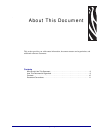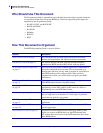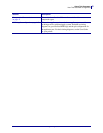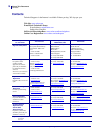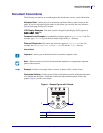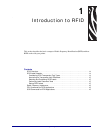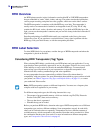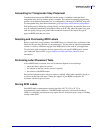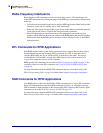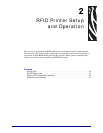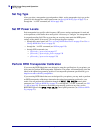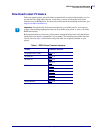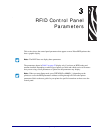
Introduction to RFID
RFID Overview
14
58978L-008 Rev. A RFID Programming Guide 11/14/2008
RFID Overview
An RFID printer encodes (writes) information on ultra-thin HF or UHF RFID transponders
that are embedded in “smart” labels, tickets, and tags. The printer encodes the information;
verifies proper encoding; and prints bar codes, graphics, and/or text on the label’s surface.
The RFID transponder is sometimes called the RFID tag or an inlay. The transponder is
usually made of an antenna that is bonded to an integrated circuit (IC) chip. The IC chip
contains the RF circuit, coders, decoders, and memory. If you hold an RFID label up to the
light, you can see the transponder’s antenna, and you can feel a bump in the label where the IC
chip is located.
Encoding and printing of an RFID label usually are completed on the first try, but some
failures may occur. If you experience consistent failures, it may signal a problem with the
RFID tags, with your label formats, or with the transponder placement.
RFID Label Selection
To select RFID labels for your printer, consider the type of RFID transponder and where the
transponder is placed on the label.
Considering RFID Transponder (Tag) Types
When selecting RFID labels, consider both your RFID printer and your application. Use tag
types that have been specifically approved for use in your printer. Failure to do so may result
in the inability to read or write to (encode) the embedded RFID tags. To ensure that an
approved tag type will perform up to your expectations, evaluate the transponder’s data
transmission rates, memory, antenna design, and write capabilities.
As new transponders become commercially available, Zebra will evaluate them for
compatibility with your printer. For more information about which tag types can be used with
your printer, see Table 9, Supported Tag Types and Default Values, on page 111, or contact
your authorized Zebra reseller.
For different transponder types, the following characteristics vary:
• The amount of programmable memory, which can include a tag ID (TID), Electronic
Product Code (EPC) data, and user memory.
• The way that data is segmented.
• Whether the tag can be locked.
Before you purchase RFID labels, determine what type of RFID transponder to use. Different
transponder types can have different attributes. Some transponders can only be read while
others can be read and written to repeatedly. Transponders also have different amounts of
available memory, which corresponds to the amount of data that can be encoded in it. Select
the combination that best suits your needs. For more information on different transponder
types, see Transponder Characteristics on page 43.
Note • RFID transponders operate on different frequencies. You must use a frequency that
complies with local regulations in your country.




